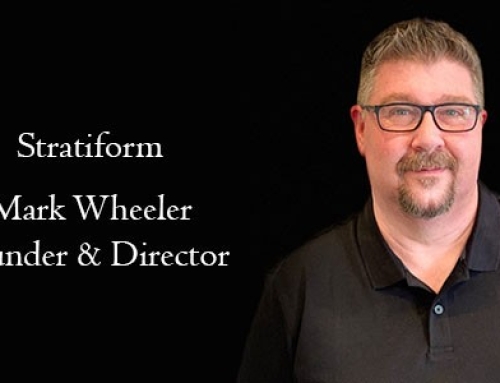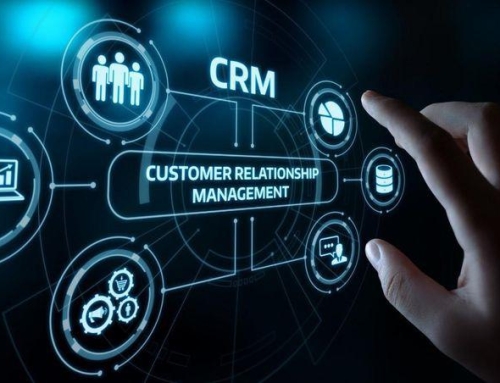In every boardroom in Australia the words “We need a CRM” is said at some point. What Mark Wheeler, Founder and Director of Stratiform Business Solutions, sees different from other Salesforce partners is the need for that CRM to be implemented with conviction from senior management. By design Salesforce is sold as an “Out of the Box, CRM solution” created for the sales team and the marketing team to align better. Any CRM out there can help the two commonly divided divisions to align better. But the gap in the market indicates that Salesforce, the number one CRM in the world, is commonly implemented without being properly aligned to the business, not executed correctly to allow for growth, and that’s mostly due to the relationship between the implementation partner and the company being an impersonal one. Frequently moving an established business from spreadsheet to Salesforce is not only daunting but requires less of a technical hand than one would think. Mark says, “We believe working with companies face to face, hearing their issues, understanding their goals and working with them to offer value to their business is the number one priority”. This philosophy allows Stratiform to implement Salesforce with great success.
Offering Value
Identified early in a Salesforce Implementation is the lack of defined processes within a business. Not uncommon for a company to grow and flourish without any processes, but the execution of a CRM quickly identifies this gap in the business. Stratiform thrives on working together with businesses to identify and rectify the need for processes to allow the business to align as a team and grow further in their success. Once put into effect, these processes allow for a structured and focused view on pipeline, forecasting, key account management and marketing efforts within the CRM. “We help our clients elevate their business through this gap analysis and through the implementation of their CRM,” says Wheeler.
What’s the difference?
The average Salesforce consultancy seems to thrive on cookie cutter implementations, forcing their clients into a box or blowing out the price to exorbitant levels and costing the business thousands of unnecessary dollars.
From Spreadsheets To Salesforce, We Help Our Customers Move To A System That Allows Clear View Of Pipeline, Forecasting Accurate Data In Real-Time
Stratiform believes in keeping it simple, allowing for organic growth within the platform. The Founder and Director believes this allows the business to spearhead the ideas for future functionality, as opposed to the consultant pushing the agenda. Salesforce has invested a lot in the success of its customers on the CRM platform, and Stratiform allows the business to grow while using Best Practice, standard configuration and the App Exchange to enable the customer to develop their CRM and grow their business.
Engage!
With Our No-Nonsense, Straightforward Implementation Process, We Personalize The Experience For Our Customers
Engagement is the key to a successful Salesforce implementation and the proof is looking at dashboards six or eight months after “Go Live” to measure success. “We do things different,” says Mark, who appreciates training teams on their new platform. “We train in the LIVE system using real data allowing sales teams to recognise their customers instantly, Customer Service see their open cases, and the Marketing department segment their data.” By avoiding PowerPoints, Excel spreadsheets, templated training courses and PDFs engagement starts on day one. “You can see the difference,” Mark states. Salesforce permits you to see the data the way you want to see it and showing examples captures the users. Lack of good training creates frustrated users and frustration never equals engagement.
Solving problems
Siloed data is a complaint you hear a lot about prior to an introduction of a CRM. Stratiform worked closely with a large company where every region was working on separate spreadsheets than trying to run a sales meeting where nothing aligned. Often such scenarios cause individual sales paths making it almost impossible to see the company’s pipeline. That was the case here. The frustration was apparent as the senior leaders would ask simple questions regarding next quarter’s forecast and there were no clear answers. Stratiform’s proud moment was around month seven after implementation of Salesforce when the dashboards were lit up during the company’s first real sales meeting straight out of the CRM. This allowed the Sales and Regional Managers to take ownership of the data and the senior leaders to see what revenue was expected in the months to come.
Working with companies like Olympus Australia and Energy Power Systems Australia has taught Mark about the importance of data. Mark carried that on when he founded Stratiform.
“When you work with a company that has been around as long as Olympus or Caterpillar you learn the power of good data,” Mark remembers. “If you have good data and your users are dedicated to using the CRM correctly then eventually the data will tell you exactly how many emails, calls, and meetings it takes to get a deal over the line”. The true power of a CRM.
Expanding the product base
Working hand in hand with their clients, Stratiform has added to its list of services.
- Custom App development
- Website development
- Search Engine Optimization
These customer-facing tools that integrate with Salesforce were a natural progression for the team. Our lineup of developers are skilled in all forms of code and understand the importance of building Apps that are secure, user-friendly and maintainable. With SEO being a popular service offered by many and usually offshored, Stratiform takes pride knowing their Australian-based team are experts, “There is nothing like working with a company and watching the Google ranking move up the page or seeing the number of conversions rise daily using our SEO methods,” Mark states. The Stratiform team has seen the proof that their method of SEO works, that website traffic can be turned into actual sales and seeing that allows the client to understand the world of Google a bit better.
What’s the future hold?
Part of implementing Salesforce is building a system that continues to meet the needs of all divisions in the business, grow and adapt with the business, and contribute to the bottom line with better processes and outcomes. Stratiform works with their customers to create a CRM strategy that outlines the plan for added functionality as the business grows. Often scoped for future phases are:
- Pardot, Salesforce’s premier marketing automation platform.
- Salesforce CPQ or Configure, Price, Quote software, is a sales tool for companies to quickly and accurately generate quotes for orders.
- Community Cloud, allowing partners to log in securely into your Salesforce CRM and only see the data you want them to see.
- Integration into ERP and back-end systems
“We build the CRM using best practice and standard configuration while keeping in mind the business will be maintaining Salesforce going forward. If we over complicate things, the client spends unnecessary money on initial development and updating code, rather than on ongoing investment in business growth, sales alignment and best practice,” explains Mark.



